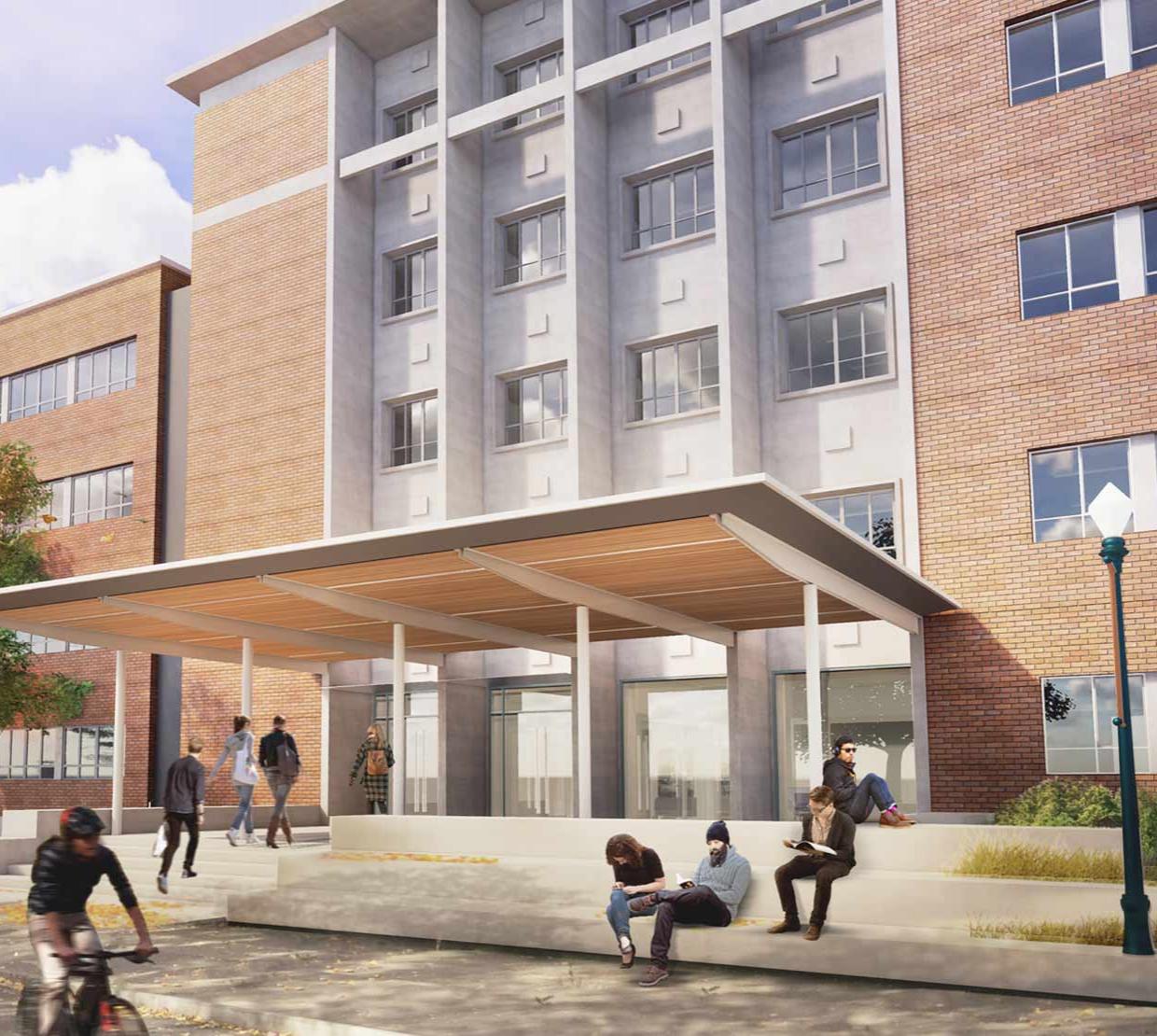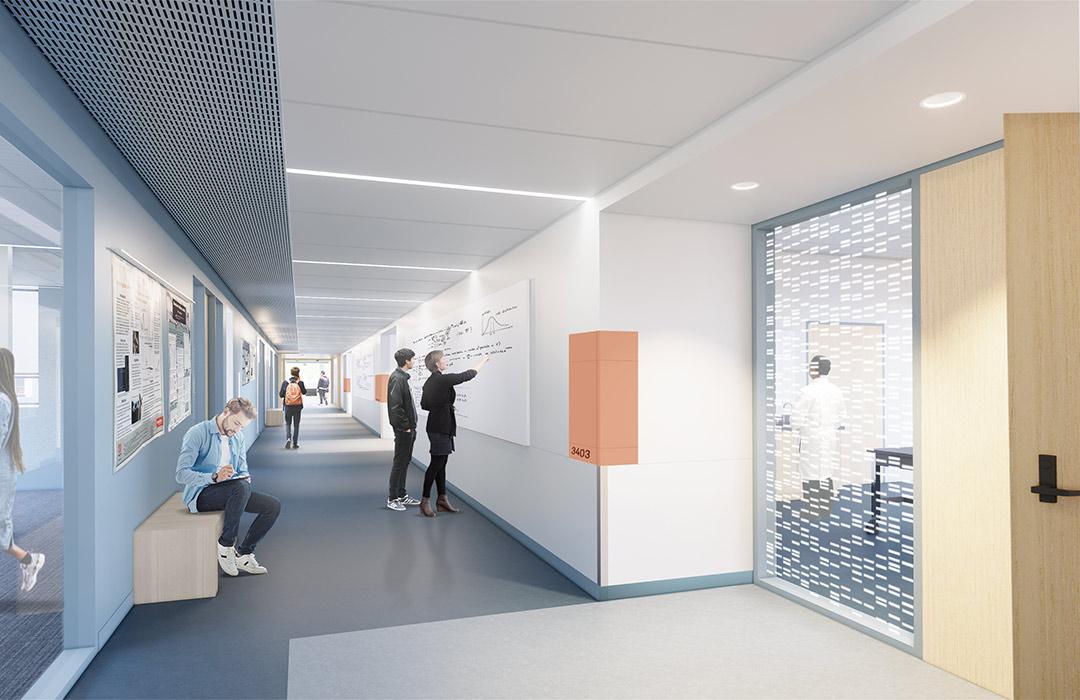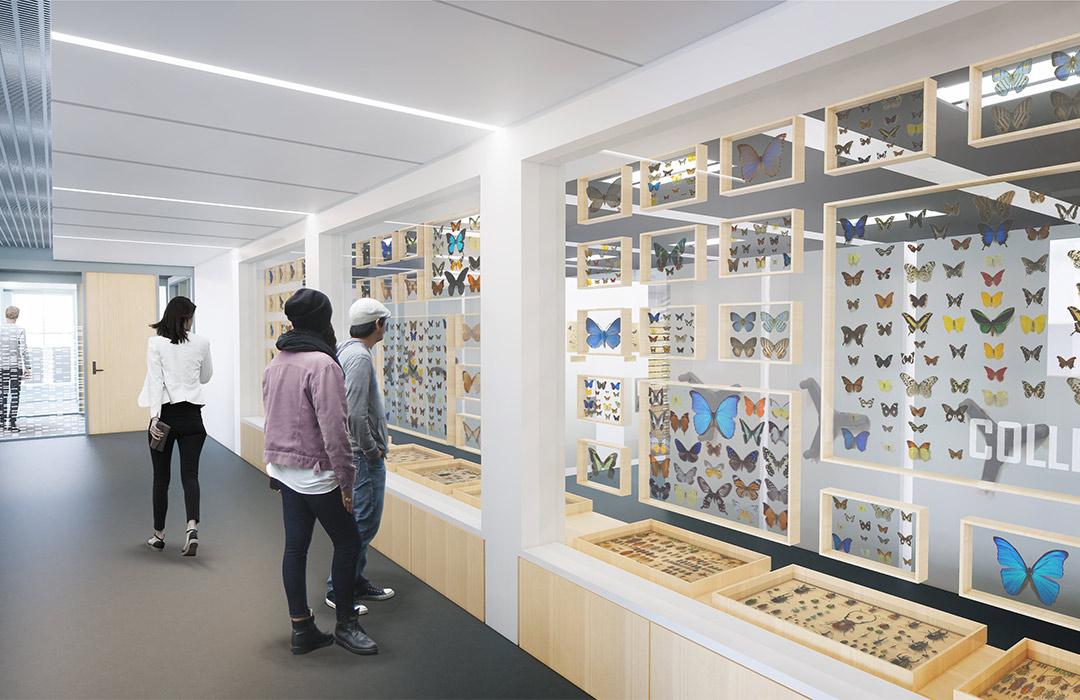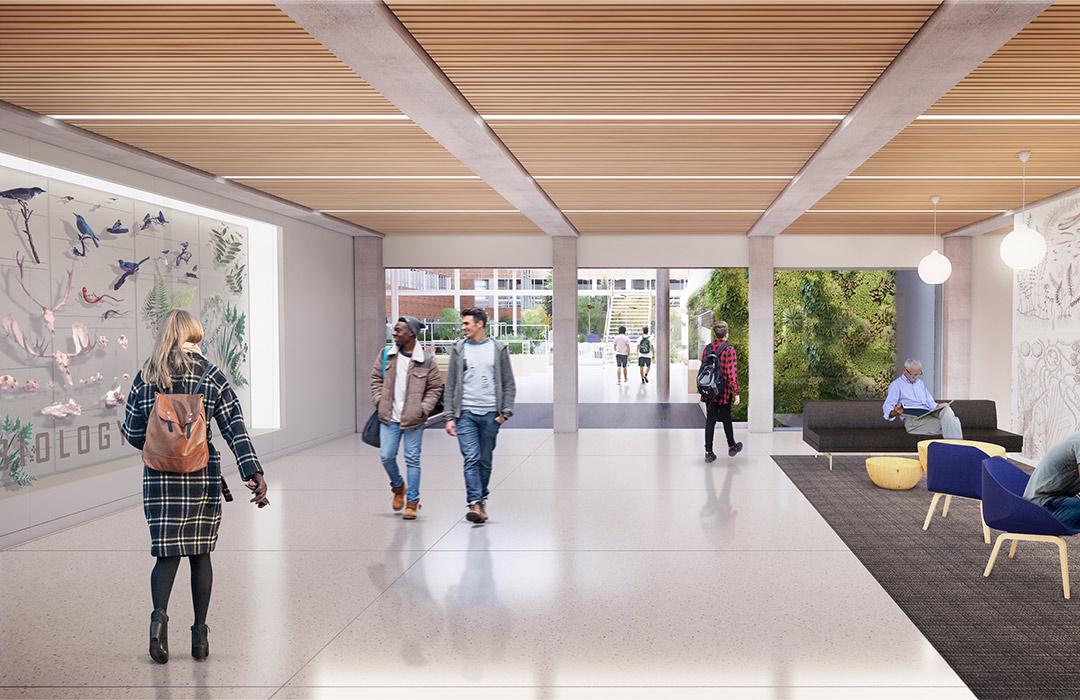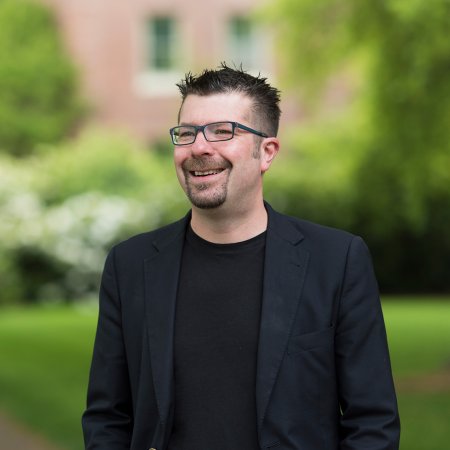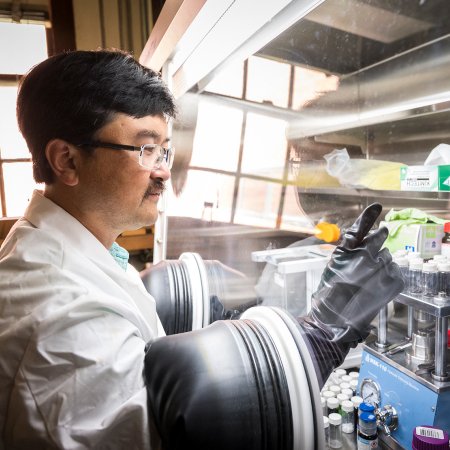A long road to the finish
The planning process for Cordley Hall’s renewal began in 2017 when the Infrastructure Working Group, established in 2016 to recommend and rate infrastructure projects to the Board of Trustees and university leadership, named Cordley Hall its top priority.
The first step to the multi-year project was to find an overflow space to hold the researchers and their labs while renovations take place. In June 2018, OSU purchased an existing research building on Research Way off-campus to serve as a new STEM building. The building is undergoing renovations to ensure it meets the needs of each department while work on Cordley takes place. The renovations at Cordley Hall will be a two-part process. The half of the building that currently houses the botany department will be renovated first. The latter will be headquartered at the new Research Way building for two years, then will move back into the newly renovated half of Cordley. Integrative Biology will follow the same process, moving into the fully renovated Cordley Hall by 2024.
The renewal project has already begun. In the summer of 2017, Cordley Hall’s roof was replaced. In addition to the new roof, eight inches of insulation was added to help save energy by keeping warm air in or out, depending on the season. The project was completed on time and under budget – a good start to the years-long overhaul.
“It’s been an interesting exercise to think about the future,” said Weis, reflecting on the multi-year process to get ready for Cordley Hall’s renovation. “But that hard work is over. The hard work left is the moves!”
When asked if there was a design element that did not make it into the final plans, Weis nodded. The architects and faculty planning team aspired to cover the existing courtyard in the center of the building with a glass roof, creating a light and plant-filled climate-controlled atrium to welcome visitors and be a centerpiece of the building design. “We even had a name for it: the ‘Bioasis,’ but we just didn’t have the money. At the end of the day, we have to live within our means,” added Weis.
While the plan for a full bioasis is tabled, Weis still hopes the departments, working with the OSU Foundation, can raise funds to enclose half the space. “We might have a partial atrium where we can host events and provide space for students to study, relax and connect.”
When it is completed in 2024, a renovated Cordley Hall will encourage collaboration, innovation and expanded realms of research. It will be a welcoming and inviting space, providing an academic home to students and researchers. The open layout with built-in social spaces will foster the interactions that inspire creativity and innovation. “The new building is going to change the dynamic of what goes on here,” added Mason.
